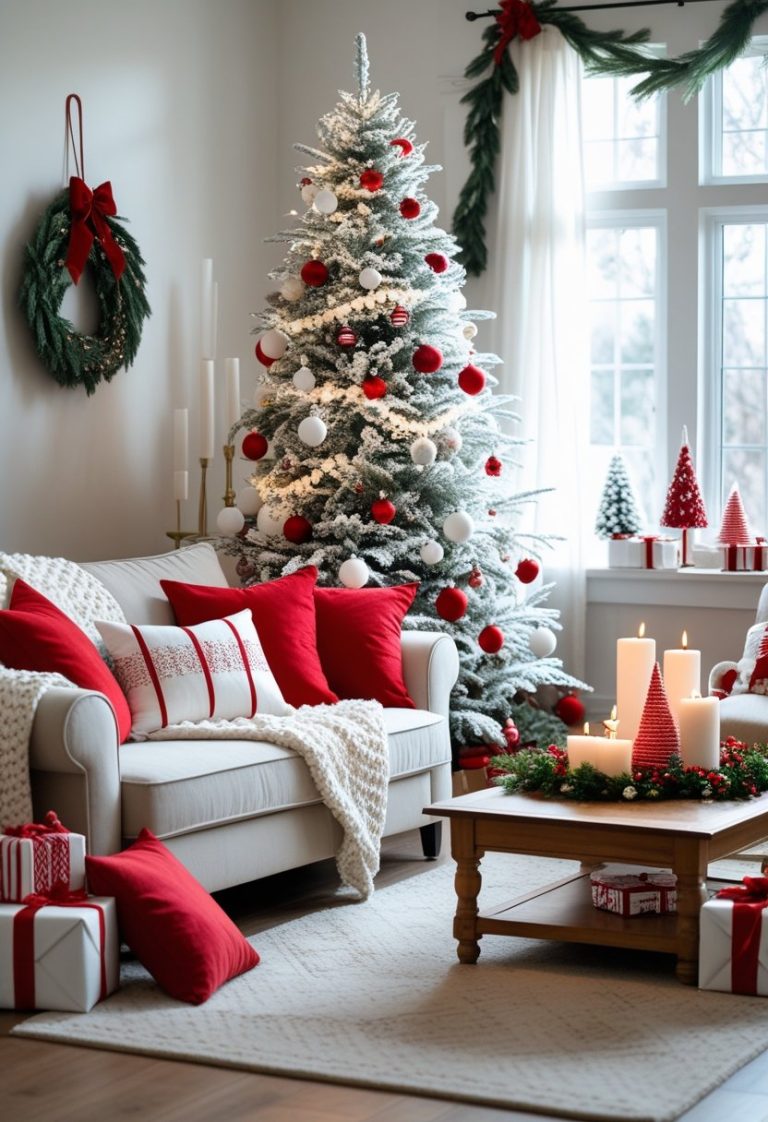Whimsical Twin Kids Bedroom | Shared Room & Storage Ideas
Creating a shared bedroom for twins requires a balance of style, function, and personality. This whimsical twin kids’ bedroom showcases how built-in storage beds and vibrant wall murals can transform a shared space into an inspiring area that feels personalized for both children.

Combining colorful themes like superheroes and unicorns with cozy pastel bedding offers a playful yet practical solution for siblings sharing a room. Smart design choices help maximize space while keeping the room inviting and organized. These ideas reflect current trends in kids’ room decor and storage, making the space both fun and functional.
Key Elements of a Whimsical Twin Kids Bedroom
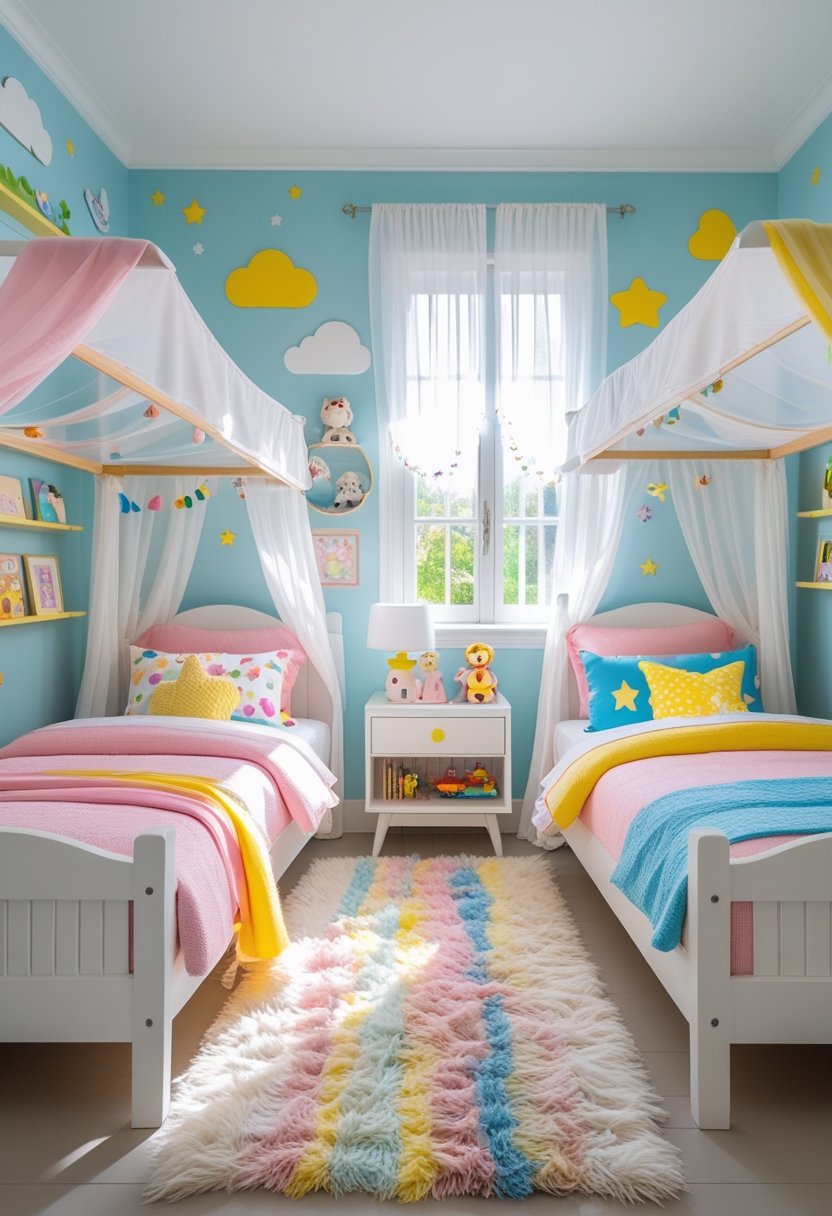
This bedroom balances playful design with practical features. Storage is integrated into beds to maximize space. Walls include vibrant, imaginative murals. Bedding combines soft pastels and gingham patterns, adding comfort and style.
Built-In Storage Bed Designs
Built-in storage beds use under-bed drawers or shelves to keep toys, books, and clothes organized. This design frees floor space for play and reduces clutter. Beds can include headboards with cubbies or side compartments for easy access.
Materials like wood or laminated finishes add durability and blend well with various decor styles. The storage solutions must be safe and accessible for children. Beds that combine sleeping and storage encourage tidiness and functional use of the shared room.
Playful Wall Murals and Creative Art
Wall murals create a focal point with themes like superheroes or unicorns, adding character and fun. Large-scale murals inspire imagination and personalize the space. Artwork can include decals, framed prints, or painted designs that complement other decor elements.
Bright colors and dynamic scenes bring energy without overwhelming the room. Art should be age-appropriate and appeal to both children sharing the space. Position murals where they are visible from key areas like beds or play zones for maximum impact.
Cozy Pastel and Gingham Bedding Choices
Soft pastel colors in bedding promote a calming atmosphere while maintaining a youthful vibe. Gingham patterns add a timeless texture and visual interest to the beds. Combining these helps balance whimsy with sophistication.
Materials should be comfortable and durable, suitable for active kids. Coordinating pastel tones with gingham pillows or throws provides cohesion across twin beds. Bedding choices support an inviting and restful environment in a shared kids’ room.
Color Schemes and Theming for Shared Bedrooms
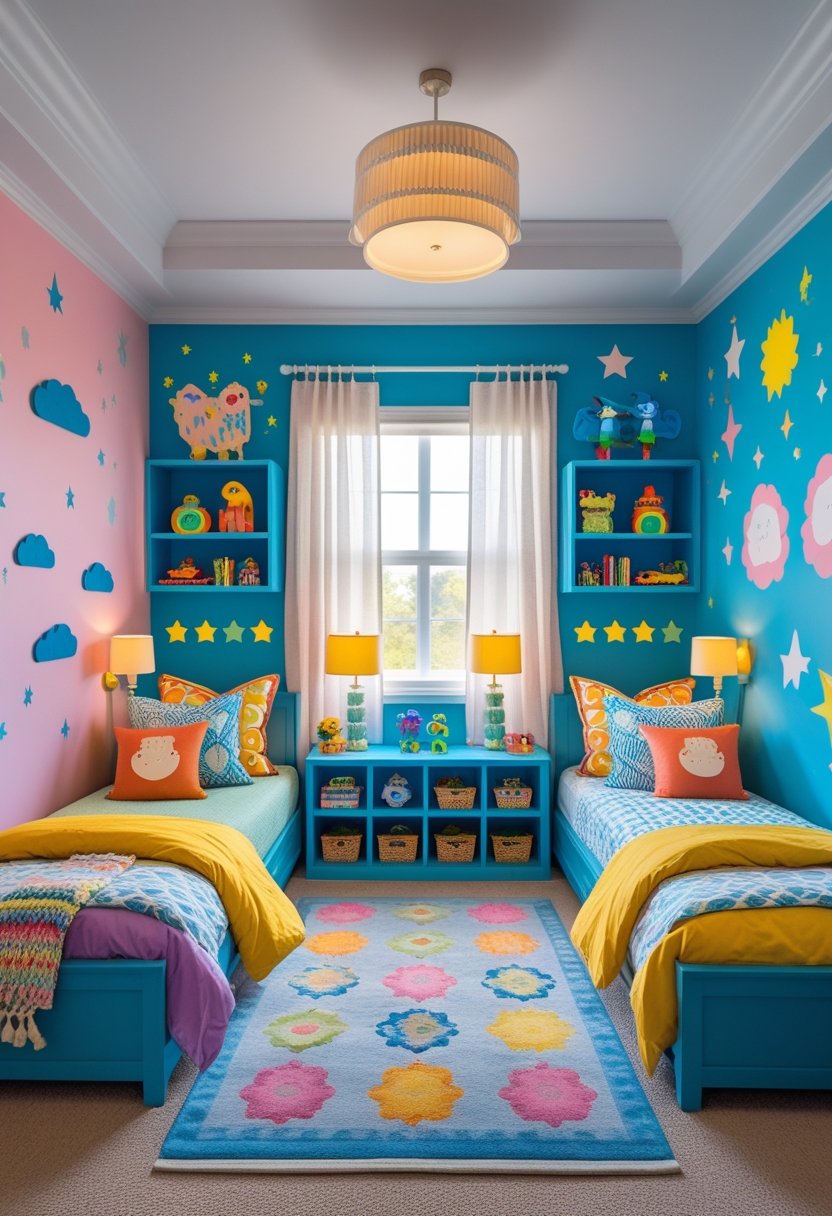
Choosing the right color schemes and themes helps define each child’s personality while maintaining harmony in the shared space. Combining playful elements with calming tones can make the room both lively and restful.
Superhero and Unicorn Inspiration
Incorporating superhero and unicorn themes offers clear visual identities for siblings. Superhero designs often use bold colors like reds, blues, and yellows with graphic wall murals, creating energetic zones. Unicorn motifs rely on softer hues, with pastel rainbows and glittery accents for a dreamy vibe.
These themes work well when balanced with neutral backgrounds to avoid overwhelming the room. Wall murals serve as focal points, while bedding and accessories reinforce each child’s theme without cluttering the space. Durable, functional furniture supports daily use while complementing the imaginative decor.
Blush and Pastel Palettes
Blush and pastel palettes establish a soothing atmosphere suitable for a shared bedroom. Shades of soft pink, lavender, mint, and light blue reduce visual tension between contrasting themes and appeal universally to children.
These colors can be used in bedding, rugs, and curtains to create cohesion. Pastels soften the look of bold murals or toys. The combination ensures a calming backdrop that encourages relaxation and rest, important for any kids’ room shared by siblings.
Accent Colors and Red Pillows
Accent colors provide contrast and visual interest without overpowering the main color scheme. Red pillows are an effective accent, introducing warmth and vibrancy.
Red contrasts well against blush and pastel tones, adding depth to the bedding while grounding a playful space. Accent pieces like pillows, small rugs, or lampshades can be easily swapped out as tastes change. Thoughtful placement of these bold elements highlights different zones and enhances shared functionality in the room.
Optimizing Shared Spaces for Siblings
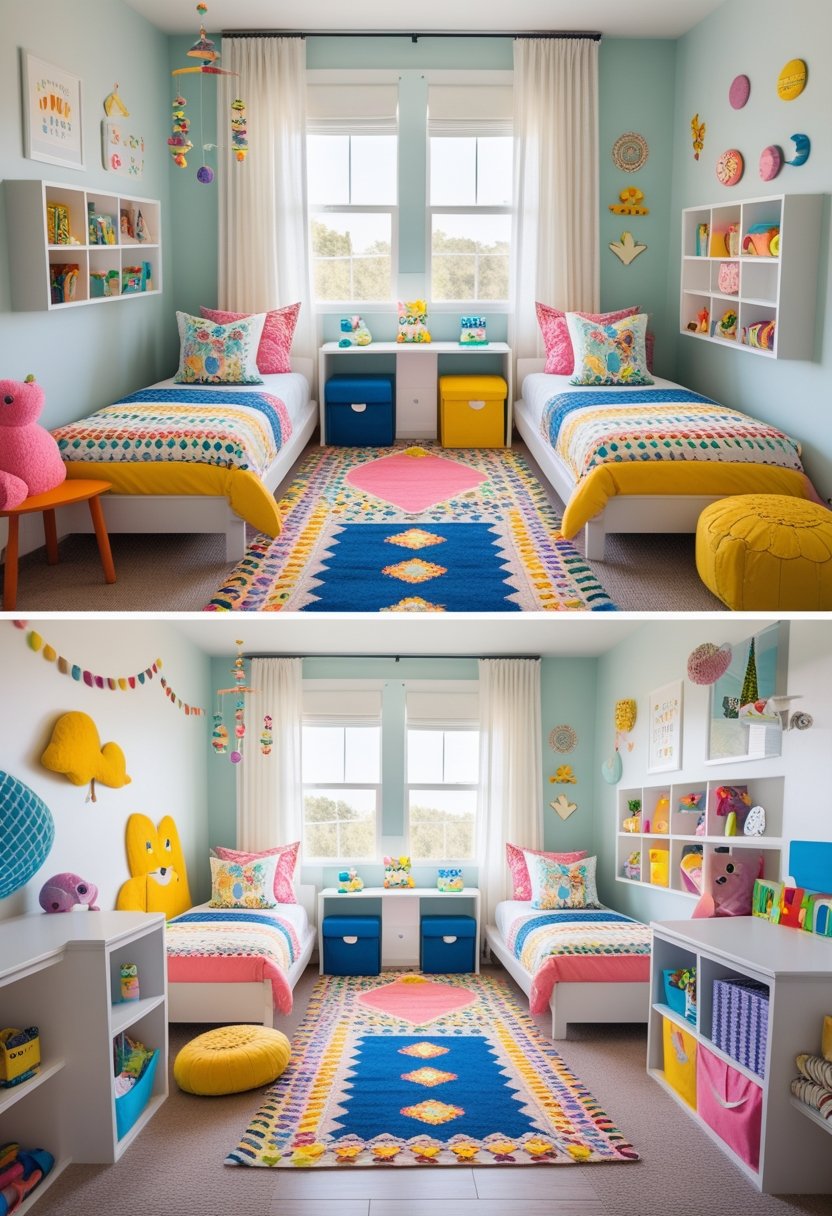
Shared kid’s rooms require clear strategies to balance personal needs, effective layouts, and privacy. Thoughtful design can create separate functional areas while maintaining an open, cohesive environment that suits both children.
Personalized Zones for Each Child
Creating distinct areas within a shared room helps each child feel ownership of their space. This can be done by using color-coded bedding, unique wall decals, or individual storage bins.
Furniture placement plays a key role. Positioning beds on opposite sides with a shared dresser or bookshelf in between forms a natural boundary. This arrangement supports both privacy and collaboration.
Designers also recommend allowing children to decorate their zones with items that reflect their interests. Personal touches like posters, toys, or themed sheets encourage individual expression without cluttering the shared room.
Layout Solutions for Harmony
A balanced layout minimizes conflict and maximizes usable space. Built-in storage beds with under-bed drawers or shelving reduce the need for extra furniture, keeping the room open and organized.
Using vertical space is essential. Wall-mounted shelves or hanging storage bins free up floor area for play and movement. Central walkways between beds allow easy access and maintain openness.
Dividers such as bookcases or curtains can provide subtle separation without closing off the room completely. Flexible layouts like bunk beds or L-shaped arrangements adapt well to different room sizes and sibling dynamics.
Noise and Privacy Considerations
Noise control is important for siblings sharing a room, especially with different sleep or activity schedules. Thick curtains, rugs, and upholstered headboards absorb sound and reduce echo.
Establishing quiet times and using white noise machines or fans can help create a calmer environment. If possible, orient beds so that heads are not adjacent to reduce disturbance.
Privacy can be enhanced with personal lighting options, such as clip-on reading lamps or nightlights in each child’s area. These small details allow each child to have control over their immediate surroundings, supporting independence within a shared space.
Functional Storage Ideas and Furniture Solutions

Maximizing storage without sacrificing play space is crucial in a shared twin kids’ bedroom. Effective furniture not only organizes toys and books but also adapts to changing needs, making the room both practical and enjoyable for siblings.
Multi-Purpose Bookshelves
Bookshelves designed with compartments of varying sizes provide easy access to books, toys, and personal items. Vertical shelving units help keep the floor clear and can serve as subtle dividers between sleeping areas.
Choosing bookshelves with built-in drawers or bins adds hidden storage, reducing clutter. Materials like wood or sturdy plastic ensure durability, while colorful finishes or decals can complement a whimsical room theme. Positioning shelves at child-friendly heights encourages independence in organizing belongings.
Under-Bed Storage
Utilizing the space beneath beds is an efficient way to store seasonal clothing, extra bedding, or bulky toys. Drawers installed under built-in or platform beds allow for easy access and help maintain an uncluttered floor.
Options include rolling bins or custom drawers that fit precisely under the bed frame. For tighter rooms, beds raised slightly off the floor create room for storage boxes or baskets. This approach leverages unused space while keeping items accessible for children.
Modular Furniture for Growing Needs
Modular furniture offers flexibility, adapting as children grow or their storage needs change. Components like stackable units, adjustable shelves, and detachable parts allow customization over time.
Such furniture pieces can serve multiple functions—desks that convert to shelves or beds that become daybeds. This versatility ensures that the room remains functional without frequent replacements, saving space and money in the long term.
Decor Trends and Finishing Touches

Creating a balanced and inviting twin kids’ bedroom involves careful attention to materials, lighting, and thematic elements. Combining tactile comfort with well-designed illumination enhances the room’s functionality and atmosphere. Thoughtful decor choices contribute to a space that feels personal yet coherent.
Soft Textures and Layering
Soft textures play a crucial role in making the room feel cozy and child-friendly. Layering different materials such as plush rugs, fleece blankets, and velvet cushions introduces warmth and tactile variation. Pastel tones in bedding often complement colorful wall murals, subtly unifying the room’s visual theme.
Using removable slipcovers and washable fabrics is practical for a kid’s room, ensuring ease of maintenance. Layering also applies to window treatments, where combining blackout curtains with sheer drapes balances natural light control and softness. This approach helps define separate zones for rest and play within a shared space.
Lighting and Ambiance
Lighting needs to balance function and mood to suit daytime activities and bedtime routines. A combination of overhead LED fixtures, dimmable wall sconces, and playful nightlights offers versatile options. Adjustable lighting supports reading, playing, and calming down before sleep.
Accent lighting around built-in storage or themed wall murals draws attention to focal points without overwhelming the space. Soft, warm bulbs are preferable to cool, harsh lighting, as they foster comfort and relaxation. Including lamps with child-safe designs and easy controls helps children engage with their environment safely.
Incorporating Storybook and Nursery Elements
Incorporating storybook motifs and nursery elements adds personality and sparks imagination in a twin kids’ bedroom. Wall murals featuring superheroes, unicorns, or fairy tale settings create visual interest and invite creative play. These elements can be balanced with neutral furniture for a timeless appeal.
Nursery-inspired touches like canopy beds, soft mobiles, or themed storage bins enhance the playful atmosphere while maintaining practicality. Keeping these details subtle and coordinated avoids overstimulation and ensures the room grows with the children’s changing preferences.
Practical Tips for Designing a Stylish Shared Kids Retreat
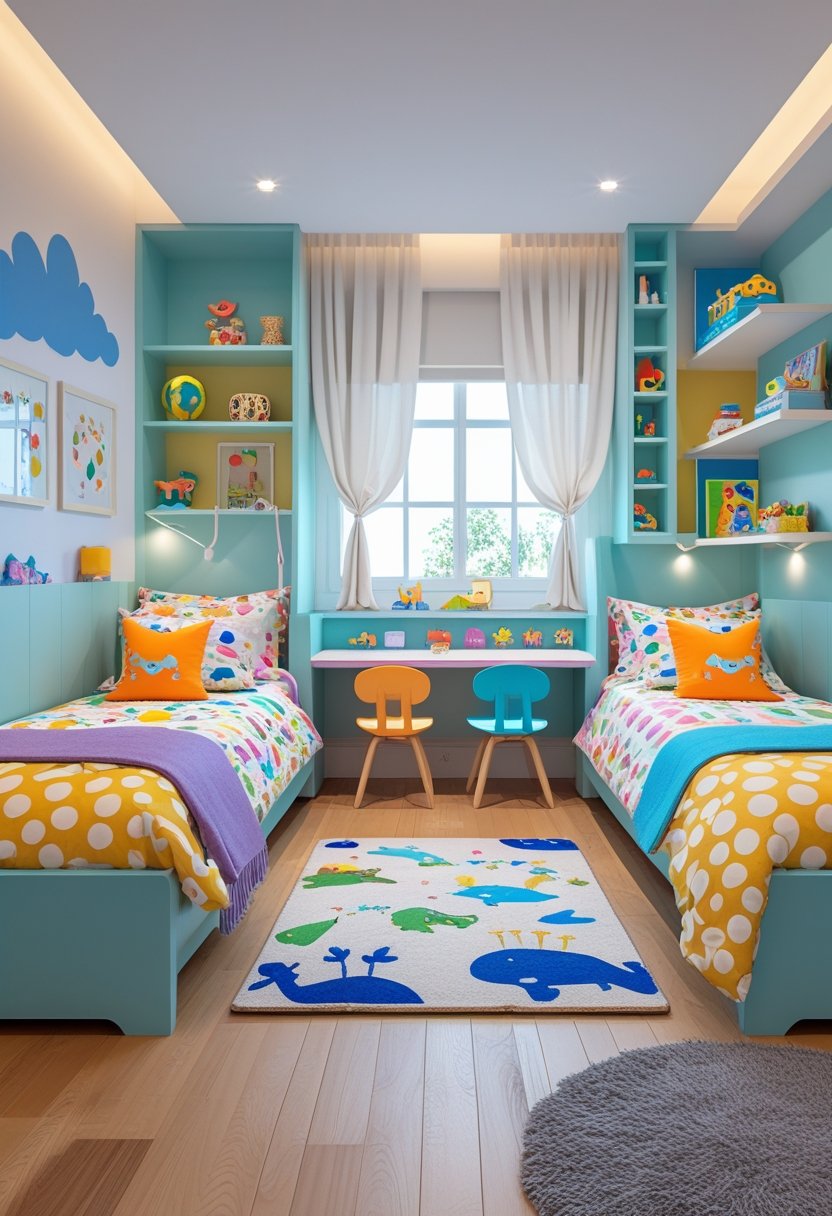
A successful shared kids’ room balances safety, flexibility, and organization. Thoughtful choices in materials, layout, and storage can create a space that grows with the children while staying orderly and secure.
Safety and Durability
Choosing durable materials is essential for a shared kids’ room. Beds and furniture made from solid wood or high-quality metal withstand rough use better than cheap alternatives. Rounded edges on furniture reduce injury risk.
Secure wall decals or murals firmly to avoid peeling or choking hazards. Ensure bunk beds or loft beds have safety rails and sturdy ladders. Anchor heavy furniture to walls to prevent tipping.
Use non-toxic, washable paints and finishes for walls and furniture. These options protect health and make cleaning up spills or marks easier.
Adapting the Room for Changing Interests
Kids’ tastes evolve, so a flexible design is key. Choose neutral furniture pieces that mix easily with different colors or themes.
Use interchangeable decor, such as removable wall decals or artwork, to reflect new interests without a full room remodel.
Incorporate multi-functional furniture, like beds with built-in storage or desks that can change height. This supports different activities like reading, crafts, or homework as needs shift.
Maintaining a Clutter-Free Environment
Shared rooms require smart storage solutions for two. Use under-bed drawers, tiered shelves, and wall hooks to maximize space.
Labeling storage bins or drawers helps kids identify where to put toys, clothes, and school supplies. A daily tidy-up routine encourages responsibility.
Open storage, like cubbies, can prevent clutter from hiding. However, balance it with closed storage to keep the room looking neat.
An organized room reduces stress and creates a welcoming space for both children.

Ana Luisa
Explore in-depth biographies, net worth insights, and exclusive updates on your favorite singers at Trionua.com. Discover the journeys, achievements, and latest news about music’s biggest stars.




